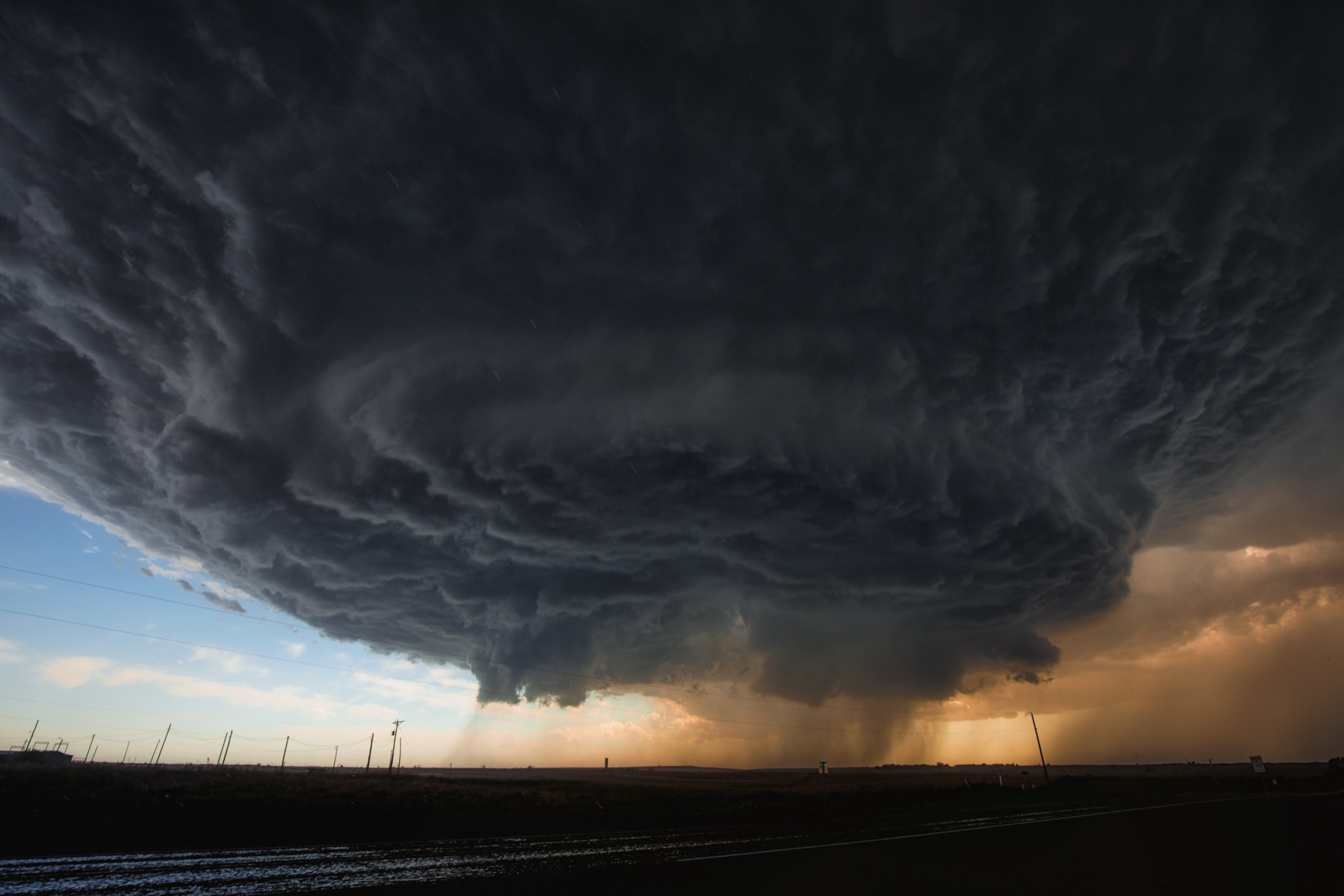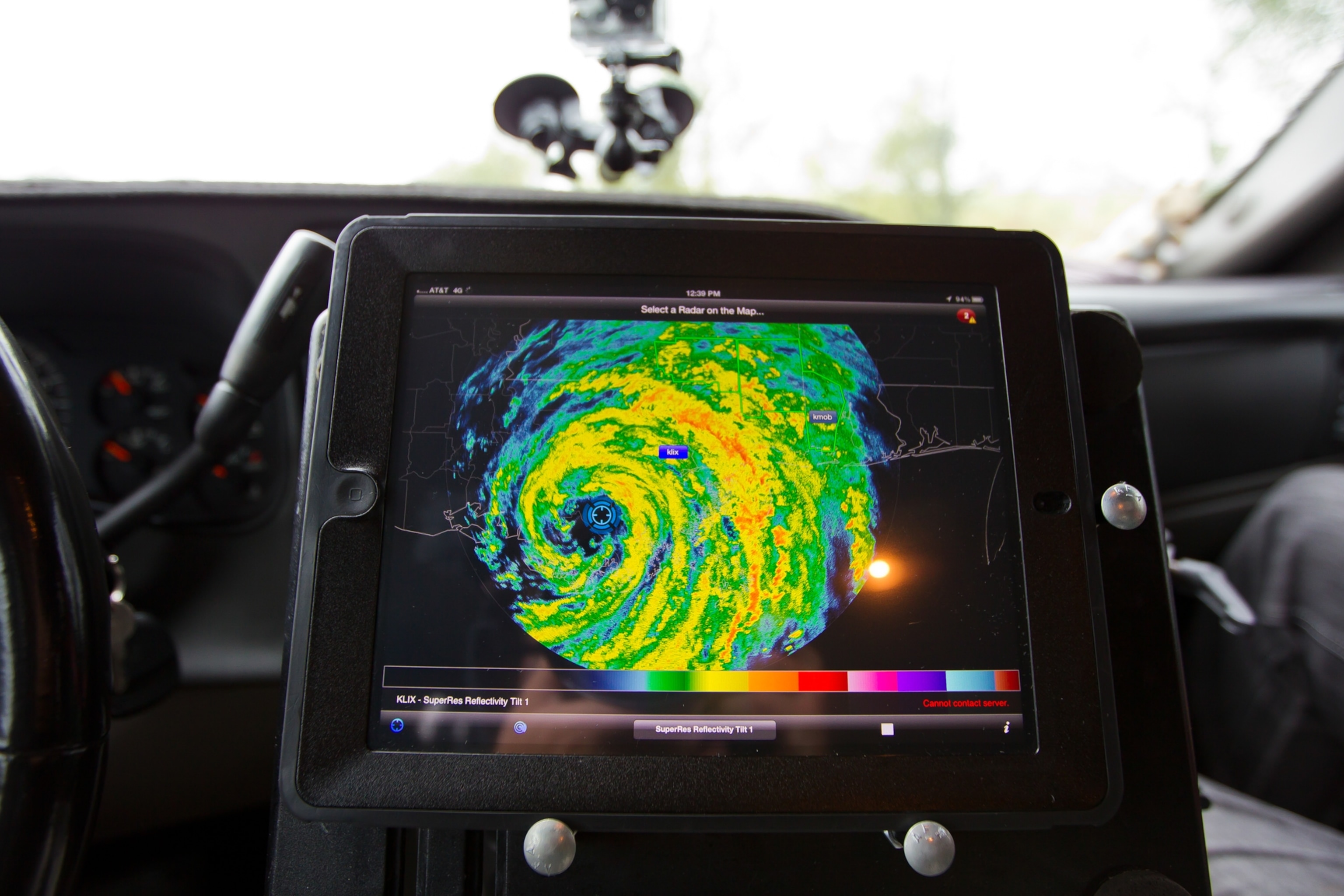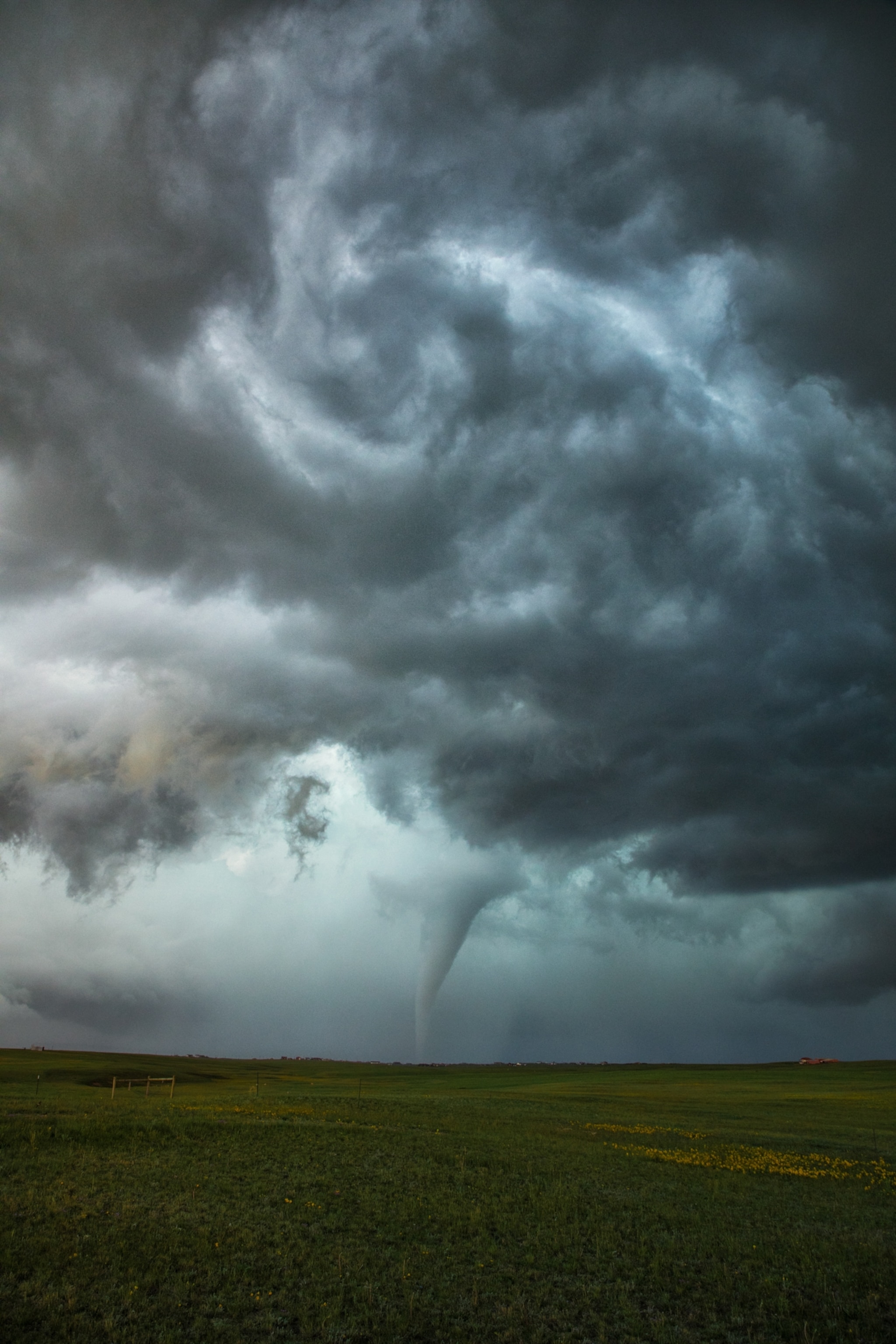'Twisters' put storm chasing on the map—but here's what it's really like
A reboot of the classic disaster film has caused a surge in amateur storm chasing. So what is it really like to chase tornadoes?

Twisters’ trailer shows its cast of characters driving full pelt towards tornadoes, launching fireworks into them, and hatching a plan to defeat Mother Nature.
While these dangerous antics are very much the creation of Hollywood, storm chasing has been a major tourist attraction in the central U.S for decades. Over a dozen tour operators in the area—with names like Extreme Chase Tour, Extreme Tornado Tours, and F5! Tornado Safaris—promise to get their high-paying customers as close to the tornadoes, clouds, rain, winds, and hailstorms as is safely possible.
Unlike the action-packed movies, storm chasing often involves driving hundreds of miles for hours at a time before they come face-to-face with anything. Sometimes they even have to patiently wait in place until the storm starts.
“It’s a lot of driving and a little bit of action,” says Erik Burns, the owner and tour director of Tornadic Expeditions. “But the action you do see is amazing and you instantly forget about the miles and hours it took to get there.”

Who was the first storm chaser?
David Hoadley is credited as the first storm chaser. In June 1956, the recent high school graduate spent the day after a fierce downpour driving around his hometown of Bismarck, North Dakota, taking 8mm movies of razed trees and torn down power-lines.
“I was soon hooked on the power and fascination of Mother Nature,” Hoadley told Storm Track, the magazine he founded and edited, back in 1987.
YEAR-LONG ADVENTURE for every young explorer on your list
FREE limited-edition frog drawstring bag with every Nat Geo Kids Book Bundle subscription
Twisters’ release is likely to see interest in the expeditions soar, just like they did after its 1996 predecessor Twister put storm chasing on the map. Ronald Stenz, a meteorology professor at the College of DuPage in Illinois, who leads educational storm chasing trips each spring and summer, struggles to see how demand can grow any further.
“I imagine it will make storm chasing even more popular, if that is possible,” Stenz said in an email.
Kim George, guest relations manager for Tempest Tours, believes that they’re already seeing the impact of Twisters. Their 2025 storm chasing season, which lasts from the middle of April until the end of June, has already sold out. There’s even a waiting list for the 2026 tours.
“At the start of May we opened our season for 2025, and it just went zonkers,” she declares over the phone. “By the end of June it had completely sold out and we have a long waitlist. We were like, ‘This is unusual. It must be because the movie is coming out.’ I’ve been with the company for 11 years and I’ve never had the season sell out so quickly.”


What is it like to chase tornadoes?
In 2023, there were 1,423 tornadoes across the U.S., according to the National Oceanic and Atmospheric Administration The majority unfolded in Tornado Alley. Originally coined to describe extreme weather around Texas and Oklahoma, Tornado Alley doesn’t “have any officially agreed upon boundaries,” says Stenz.
For George, it starts on the south coast of Texas and goes all the way up beyond the Canadian border. Tempest Tours have also conducted tours in Kansas, New Mexico, eastern Colorado, Nebraska, Iowa, North and South Dakota, Montana, Wyoming, and Minnesota. While the eastern Dakotas’ road networks and terrain provide the best chasing conditions, Nebraska has produced the most photogenic tornadoes, says Stenz.
The storms differentiate depending on the month and location of the tour. Spring storms usually move much faster than the ones later in the season. Although the spring storms in the High Plains don’t move as quickly, according to George. In May, storm formations start to slow down.
“The lighter storms move pretty fast, depending on how they form and how much wind shear they have,” says George. “We’re in and out of the van really quickly so we can keep up with them. We often have a longer time to view storms later in the season. Especially up in Montana. You can watch them form for an hour. You don’t have to rush as much, but they’re still very intense.”
Tornadoes are usually visible from two or three miles away, but storm chasers will sometimes get within a mile and a half for better visibility. Once they register thunder and lightning strikes, they know they’re too close and they’ll use their already planned escape routes if necessary.

Has climate change made an impact?
Deciding exactly where to look for storms has started to become more complicated.
Though Twisters declined to include climate change in its plot, shifting climate conditions are reshaping what we know about how storms form and where.
Evidence suggests the “number of tornadoes in areas more favorable for storm chasing has decreased slightly over time,” says Stenz. Research shows that tornadoes are moving eastwards towards the more wooded Mississippi Valley and away from the flatter and less populated High Plains.
It is yet to be determined whether this is the direct result of climate change. Stenz notes that it “could simply be some kind of natural variability.” He’s also skeptical that climate change has impacted the amount of tornadoes per year.
(Learn more about why we still don't know the tornado-climate change relationship.)
“It is unlikely that climate change has had any major impact on my storm chasing,” he insists. “Tornado counts have large variability year to year, but over the long-term there do not appear to be any large trends in tornadoes per year.”
While the effect of climate change on tornado activity remains uncertain, research is actively underway. Any impact is likely to result in fewer tornadoes, thinks Burns.
What he has observed is that the transitional years between the El Niño and La Niña climate patterns in the Pacific Ocean, which occurred this summer, are creating more volatile weather conditions.
“This has been a particularly violent year,” says Burns, highlighting April’s Nebraska and May’s Iowa tornado attacks
Not that any of this will keep the storm chasers away. Whatever the weather, they’ll be there to hunt, document, and educate. Sometimes they might even inspire, too.
“People will go on a tour several times so that they can learn how to chase on their own,” says Burns. “To see people who really love science, ask thousands of questions in the week, then go out and chase on their own, and live out their dreams of seeing tornadoes. It’s an amazing feeling.”
But while anyone can technically go storm chasing, Stenz recommends taking part in the National Weather Service’s free training in storm spotting and a meteorology class, as well as “chasing first with experienced storm chasers before venturing out on your own.
“So many people want to tick storm chasing off their bucket list,” insists George. “But it’s about keeping yourself safe while chasing. That’s most important of all.”







